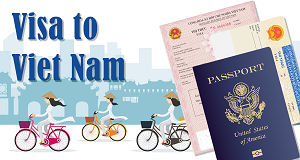US, VN begin to hit trade stride
HA NOI — Viet Nam-US trade normalisation was the principal economic step that not only opened up business opportunities for both nations but that also, despite some remaining frictions, consummated both nations’ post-war reconciliation, said a former official of the US Trade Representative’s office.
Visiting Ambassador Charlene Barshefsky, who was on the US team in negotiations leading up to the signing and ratification of the Bilateral Trade Agreement (BTA) four years ago, spoke at a meeting yesterday that gathered members of the local business community, diplomats and students in Ha Noi. The meeting was hosted by Vu Tien Loc, Chairman of the Viet Nam Chamber of Commerce and Industry.
Barshefsky, a senior international partner with the firm of Wilmer Cutler Pickering Hale and Dorr LLP, said that the BTA, within the past four years, has accelerated Viet Nam’s economic reforms, set a foundation for its bid for WTO membership and made the US into Viet Nam’s largest export market.
"It shows rapid growth in trade and investment," she said.
Viet Nam exports to the US have risen by US$4.2 billion, from $800 million to $5 billion in just four years, especially in agricultural products such as fruit, cashew nuts and coffee, and in light manufacturing of such products as furniture and garments.
Barshefsky said she was impressed with the penetration of Vietnamese goods into the US market.
"Vietnamese furniture companies sold us 20,000 chairs in 2000 when the non-Normal Trade Relations (NTR) tariff was 60 per cent and 2.6 million chairs in 2004 with the zero NTR," she said.
After ratification of the BTA, Viet Nam’s general export growth has risen from $11 billion in 1999 to $20 billion in 2003, and the country has become one of the world’s most rapidly growing exporters. Foreign investment is also up from a stock of $13 billion to $20 billion.
Viet Nam has become an important market for American civil aircraft, and the country purchase of $60 million in American cotton and $30 million in American scientific and medical equipment last year were among a few examples, she said, of the progress of the relationship. However, Barshefsky warned, both sides should work to ease some trade frictions and disputes giving concern in both countries.
Viet Nam’s justice ministry should take greater efforts to improve the transparency of legal and regulatory systems, including more frequent and timely publication of regulations and acceptance of comments, she said.
The high rate of piracy is also a likely deterrent to high-quality investment by information technology businesses and hi-tech firms, she added.
According to Barshefsky, American businesses complain about the issuance of licenses for insurance companies and the independence of the telecommunications regulatory agency.
Likewise, Vietnamese businesses have shown frustration with US trade policies, especially in the well-publicised catfish - and shrimp-dumping cases that American farmers filed against Viet Nam.
The Viet Nam-US BTA was ratified in November 2001 after the nations’ governments had worked through a series of difficult emotional issues including search for and recovery of American soldiers missing in action.
Viet Nam News, January19, 2005



